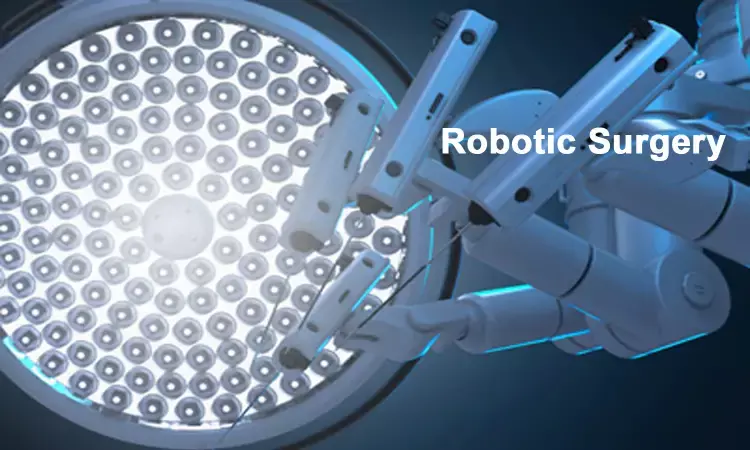- Home
- Medical news & Guidelines
- Anesthesiology
- Cardiology and CTVS
- Critical Care
- Dentistry
- Dermatology
- Diabetes and Endocrinology
- ENT
- Gastroenterology
- Medicine
- Nephrology
- Neurology
- Obstretics-Gynaecology
- Oncology
- Ophthalmology
- Orthopaedics
- Pediatrics-Neonatology
- Psychiatry
- Pulmonology
- Radiology
- Surgery
- Urology
- Laboratory Medicine
- Diet
- Nursing
- Paramedical
- Physiotherapy
- Health news
- Fact Check
- Bone Health Fact Check
- Brain Health Fact Check
- Cancer Related Fact Check
- Child Care Fact Check
- Dental and oral health fact check
- Diabetes and metabolic health fact check
- Diet and Nutrition Fact Check
- Eye and ENT Care Fact Check
- Fitness fact check
- Gut health fact check
- Heart health fact check
- Kidney health fact check
- Medical education fact check
- Men's health fact check
- Respiratory fact check
- Skin and hair care fact check
- Vaccine and Immunization fact check
- Women's health fact check
- AYUSH
- State News
- Andaman and Nicobar Islands
- Andhra Pradesh
- Arunachal Pradesh
- Assam
- Bihar
- Chandigarh
- Chattisgarh
- Dadra and Nagar Haveli
- Daman and Diu
- Delhi
- Goa
- Gujarat
- Haryana
- Himachal Pradesh
- Jammu & Kashmir
- Jharkhand
- Karnataka
- Kerala
- Ladakh
- Lakshadweep
- Madhya Pradesh
- Maharashtra
- Manipur
- Meghalaya
- Mizoram
- Nagaland
- Odisha
- Puducherry
- Punjab
- Rajasthan
- Sikkim
- Tamil Nadu
- Telangana
- Tripura
- Uttar Pradesh
- Uttrakhand
- West Bengal
- Medical Education
- Industry
Robotic assistance significantly improves continence rates in radical prostatectomy: Study

Robotic assistance compared to classical laparoscopy significantly improves the continence rates following nerve sparing radical prostatectomy. The recent study was presented at the 35th European Association of Urology (EAU) Virtual Annual Meeting in 2020.
The researchers from Germany analysed the potential differences in the clinical outcomes following robot-assisted radical prostatectomy (R-LRPE) and conventional laparoscopic radical prostatectomy (LRPE). This was the first trial which presented the differences in the continence rates between the two procedures in a prospective randomised control trial. Continence was defined as patients not requiring pads at all for at least 3 consecutive days.
After ethical committee approval and obtaining informed consent, the trial detected difference of 3 month continence rates with 80% power and significance level 5% in 782 patients. Patients who experienced the procedures were recruited from 4 clinical sites in Germany. They were randomized in the ratio of 3:1 for R-LRPE and LRPE. Patients were blinded until 3 months following surgery and were required to maintain daily recordings of pad consumption until then. Follow-up was carried out on 1, 3, 6, 12, 24, 36 months postoperatively. The continence rates were analysed by time-to-event-analyses.
The key findings of the study were:
- 527 and 186 patients underwent R-LRPE and LRPE respectively.
- Nerve sparing rates, prostate weight, margin status, pathological tumour stage, duration of surgery and catheterization were comparable among both groups.
- Kaplan Meier analysis using daily recordings of patients revealed significantly better continence rates in the R-LRPE group (p=0.00064) during the first 3 months postoperatively. Similar results were observed at 6 (p=0.004) and 12 months (p=0.044) follow-up.
- Subset analysis revealed a clear tendency but no significant difference in continence rates in patients who underwent non-nerve sparing prostatectomy (p=0.18) among the two groups.
- Furthermore, R-LRPE resulted in a significantly lesser complication rates (p<0,001).
Thus the researchers concluded in the trial presented at the virtual conference that Robotic assistance (daVinci) compared to classical laparoscopy significantly improves the continence rates following nerve sparing radical prostatectomy.
BDS, MDS
Dr.Niharika Harsha B (BDS,MDS) completed her BDS from Govt Dental College, Hyderabad and MDS from Dr.NTR University of health sciences(Now Kaloji Rao University). She has 4 years of private dental practice and worked for 2 years as Consultant Oral Radiologist at a Dental Imaging Centre in Hyderabad. She worked as Research Assistant and scientific writer in the development of Oral Anti cancer screening device with her seniors. She has a deep intriguing wish in writing highly engaging, captivating and informative medical content for a wider audience. She can be contacted at editorial@medicaldialogues.in.
Dr Kamal Kant Kohli-MBBS, DTCD- a chest specialist with more than 30 years of practice and a flair for writing clinical articles, Dr Kamal Kant Kohli joined Medical Dialogues as a Chief Editor of Medical News. Besides writing articles, as an editor, he proofreads and verifies all the medical content published on Medical Dialogues including those coming from journals, studies,medical conferences,guidelines etc. Email: drkohli@medicaldialogues.in. Contact no. 011-43720751


